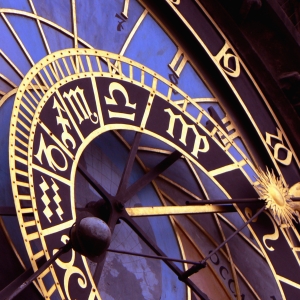This is an annual repost for the holidays. For an in-depth discussion on this topic please tune in to Astrological Musings Radio Sunday morning, December 20 2009, at 11 am Eastern (or listen to the archived show later). More details here.
 by Lynn Hayes In the 2,000 year old tale that we know as the Christmas story, three wise men came out of the east following a star to Bethlehem. The three wise men were Magi, members of the priestly class of Persia. Ancient historian Diodorus tells us that after Persia invaded Babylon, the Magi learned astrology from the Chaldeans as well as alchemy and other occult arts.
by Lynn Hayes In the 2,000 year old tale that we know as the Christmas story, three wise men came out of the east following a star to Bethlehem. The three wise men were Magi, members of the priestly class of Persia. Ancient historian Diodorus tells us that after Persia invaded Babylon, the Magi learned astrology from the Chaldeans as well as alchemy and other occult arts.
There has been much debate over the centuries as to the identity of the Star that the Magi followed. In ancient astrology Jupiter, being King of the Gods, was associated with kings and Johannes Kepler in 1606 hypothesized that the Star was a conjunction of Jupiter and Saturn in Pisces in June of 2007. Astronomer Michael Molnar says:
Jupiter underwent two occultations (“eclipses”) by the Moon in Aries in 6 BC. Jupiter was the regal “star” that conferred kingships – a power that was amplified when Jupiter was in close conjunctions with the Moon. The second occultation on April 17 coincided precisely when Jupiter was “in the east,” a condition mentioned twice in the biblical account about the Star of Bethlehem. In August of that year Jupiter became stationary and then “went before” through Aries where it became stationary again on December 19, 6 BC. This is when the regal planet “stood over.” – a secondary royal portent also described in the Bible. In particular, there is confirmation from a Roman astrologer that the conditions of April 17, 6 BC were believed to herald the birth of a divine, immortal, and omnipotent person born under the sign of the Jews, which we now know was Aries the Ram
 opposition between Pluto and Uranus which sextiles an opposition between Neptune and Mercury. Jupiter in Aries is at the exact midpoint of the Mercury/Uranus sextile. This is a powerful configuration that could bear out this theory.
opposition between Pluto and Uranus which sextiles an opposition between Neptune and Mercury. Jupiter in Aries is at the exact midpoint of the Mercury/Uranus sextile. This is a powerful configuration that could bear out this theory.
However, there was a slow moving comet in 5 b.c.e. that bears the hallmarks of the gospel stories. The gospel of Matthew reports that the comet “stood” over Bethlehem, and Chinese accounts of the comet in 5 b.c.e. said that it was visible in the sky for 70 days. Although in the middle ages comets were seen as portents of doom and disaster, in more ancient times comets were said to herald new dynasties. Colin Humphries has written a very convincing article promoting the Comet as the Star of Bethlehem.
Because the Magi were astrologers and astronomers, it is more likely that they used a combination of astrological information to seek the star since they would not have been privy to the schedules of comets. However, the confluence of events that occurred during this period, combined with a high expectation of the imminence of a messiah to rescue the Jews from Roman subjugation, no doubt led to a flurry of messianic prophecy and excitement.

